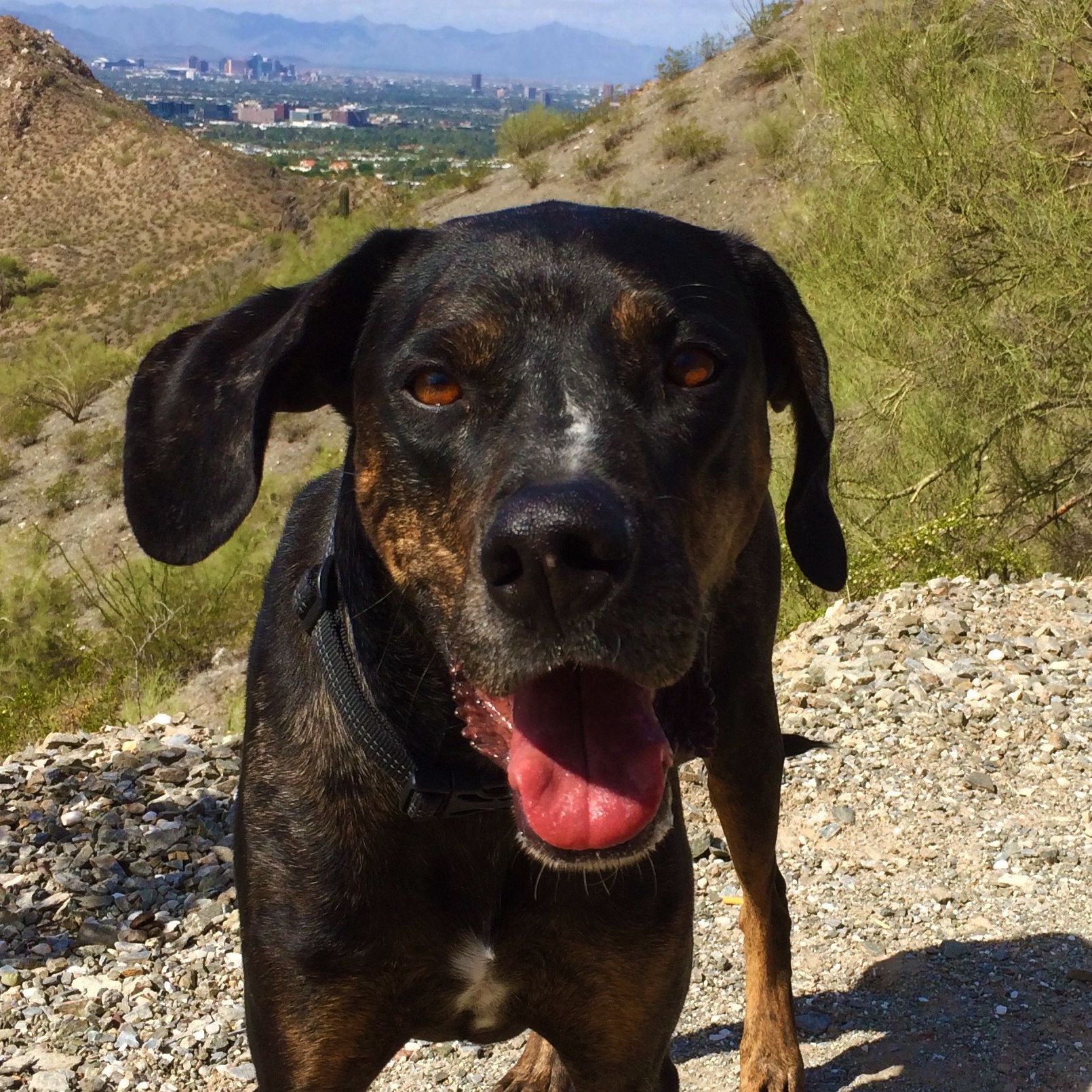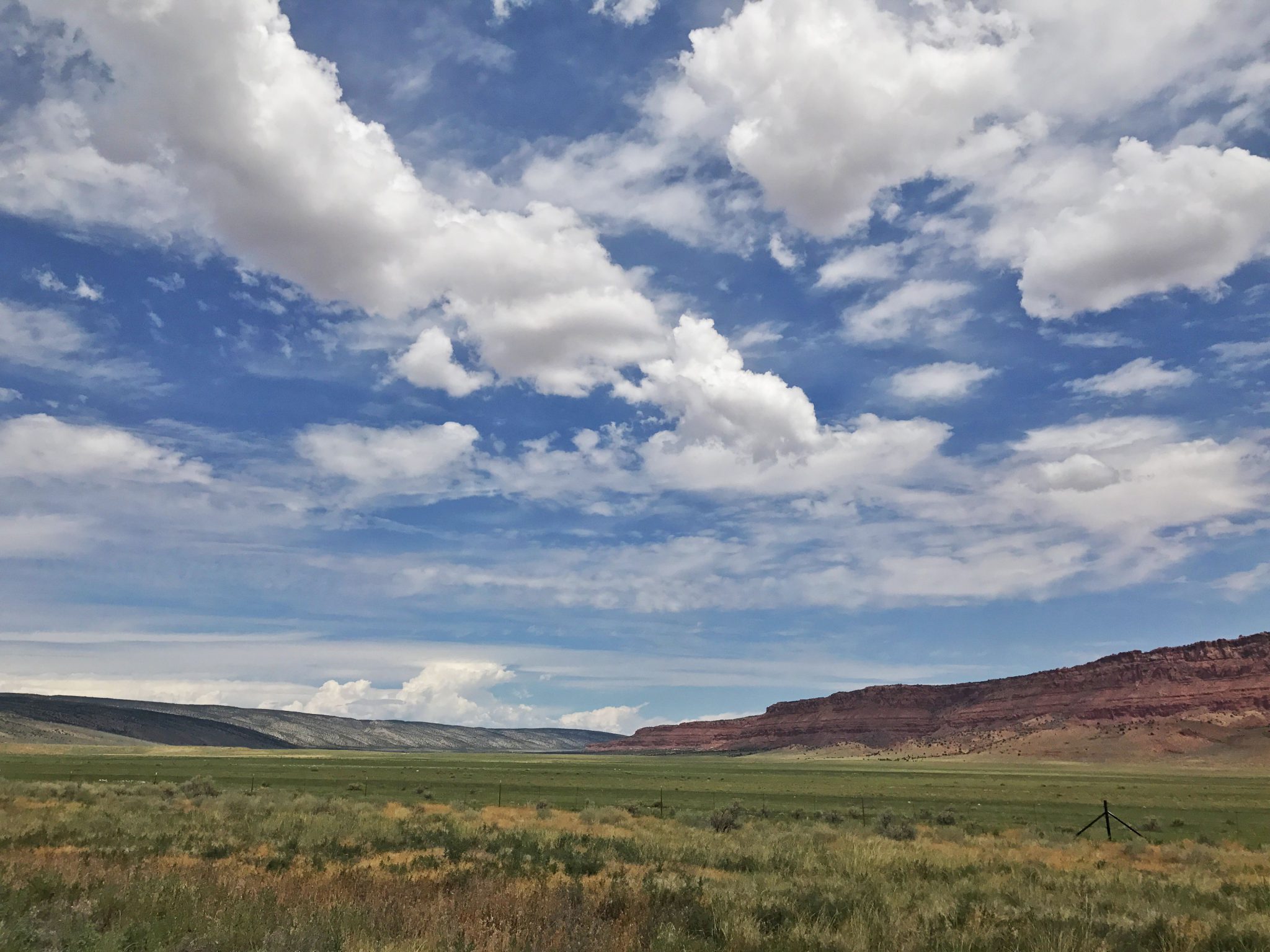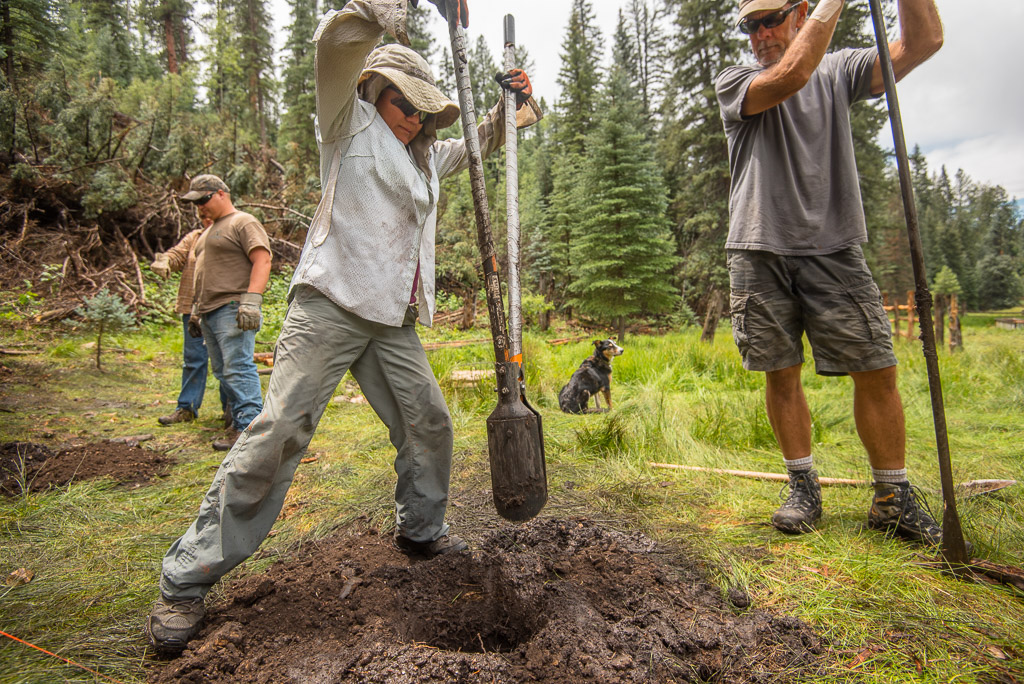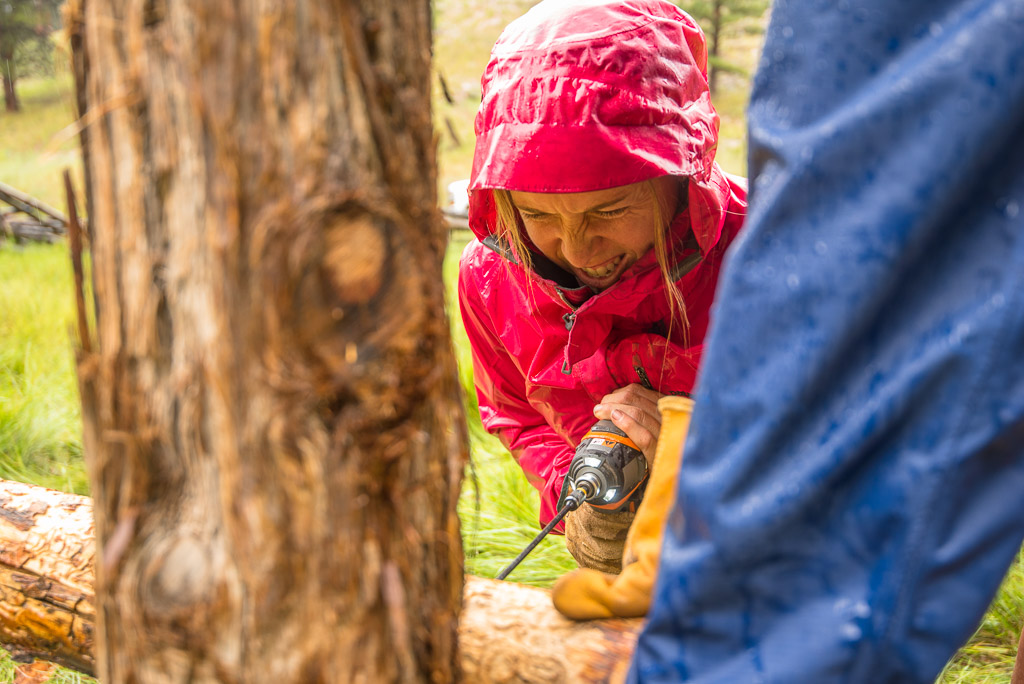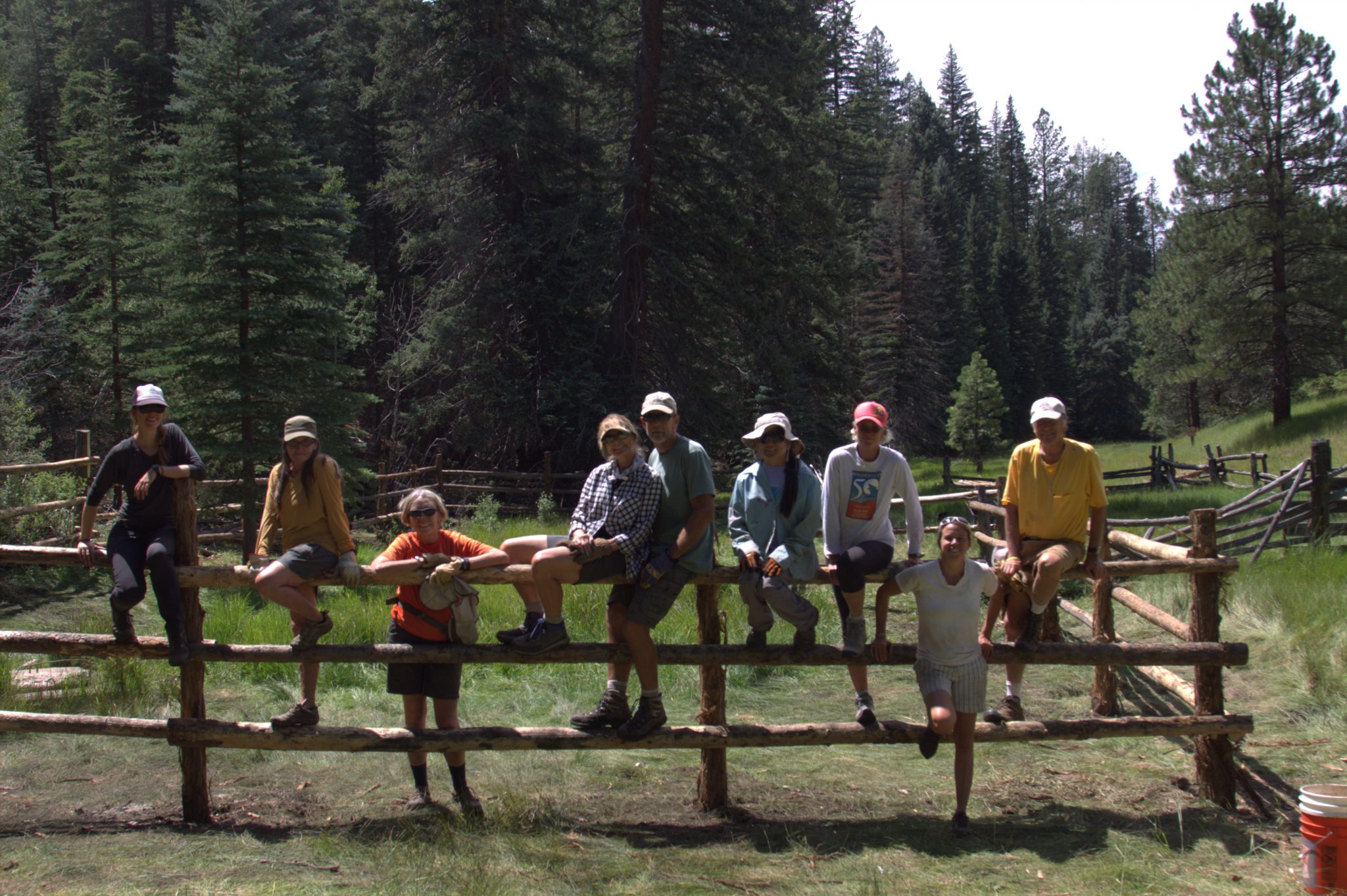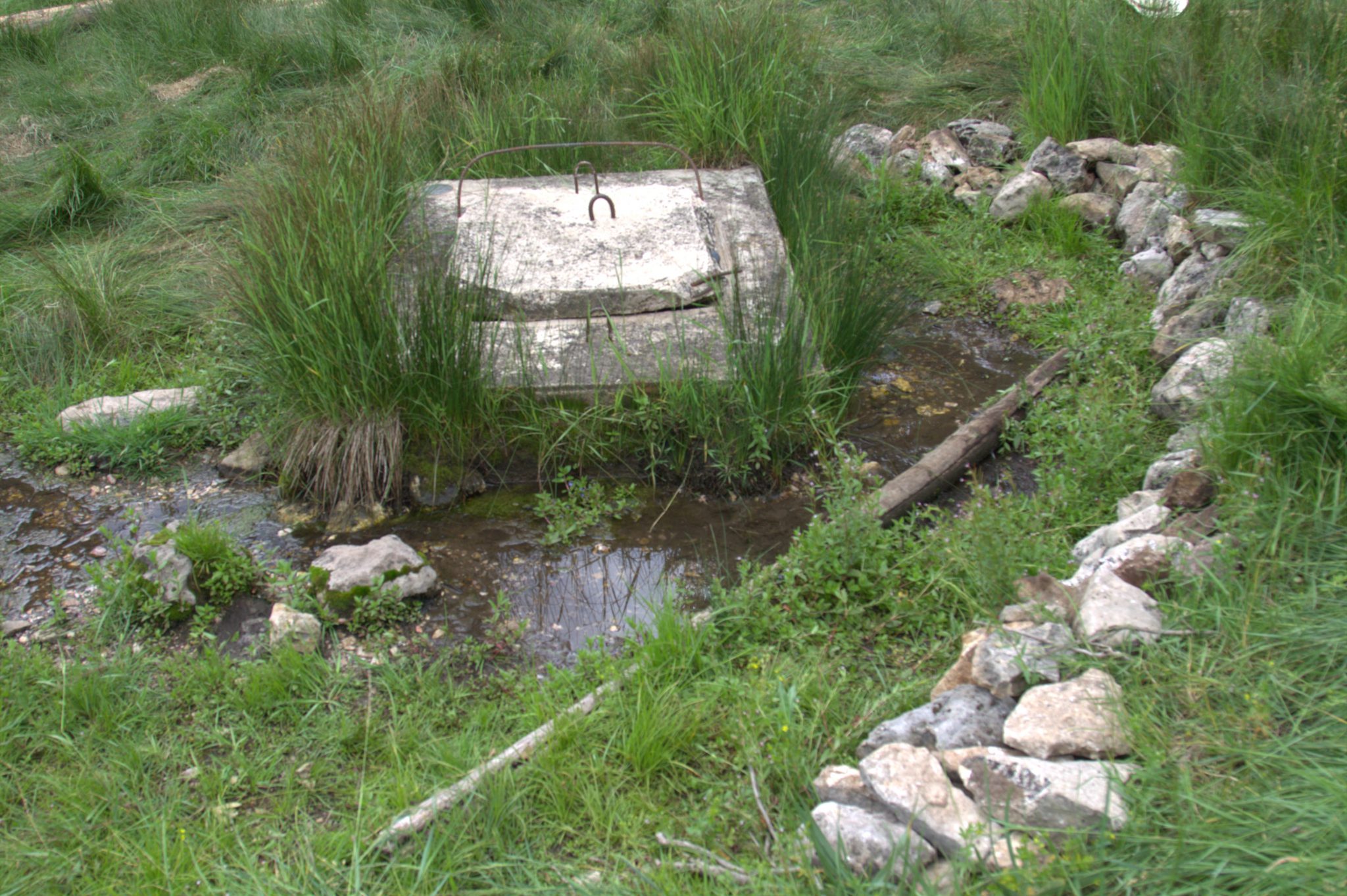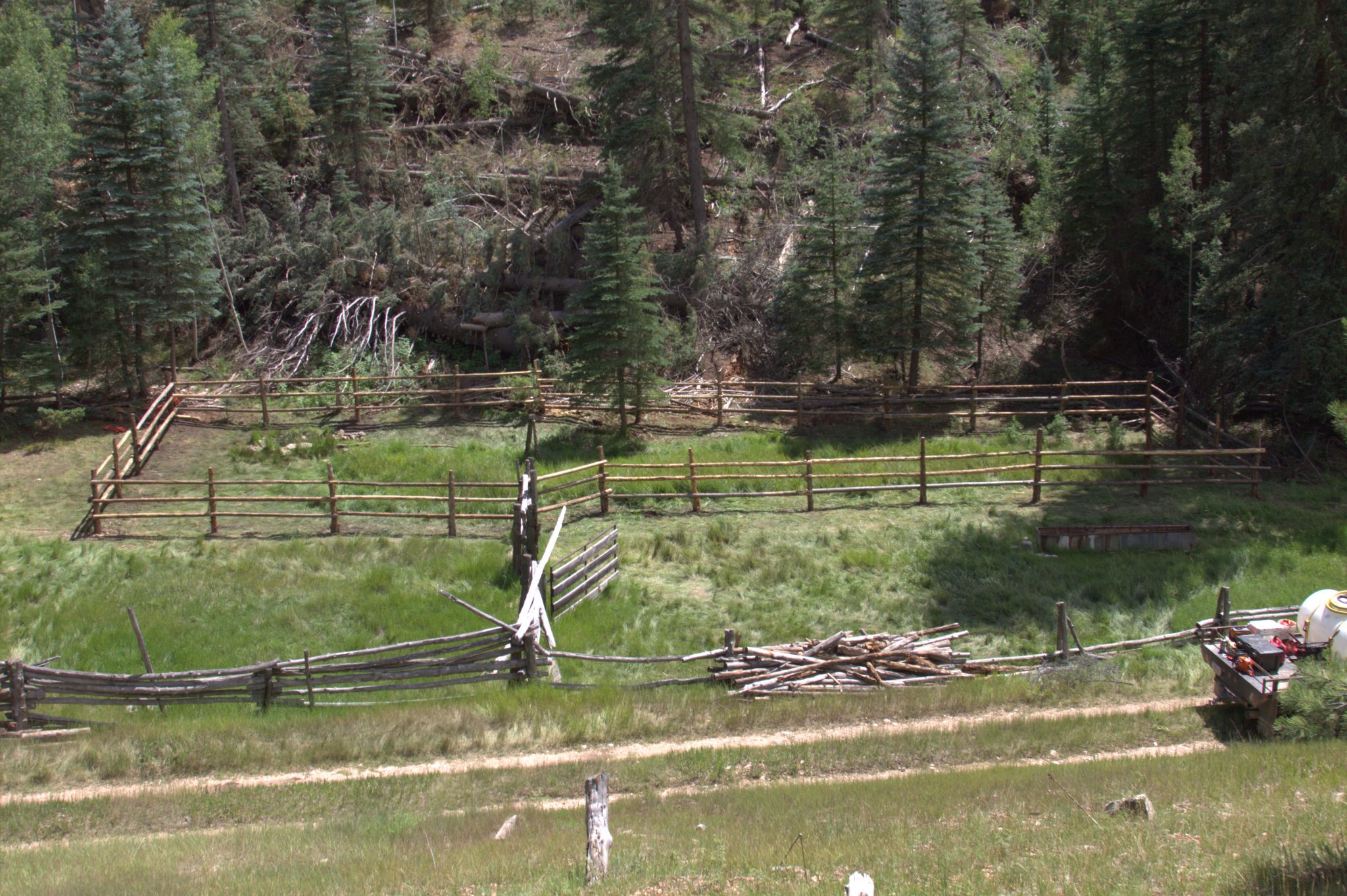So, did you know that if you cuddle up with a mature ponderosa pine and put your nose deep between the bark cracks you’ll find the rich and luscious smell of vanilla, and sometimes even butterscotch? Yup, it’s true, especially at the Grand Canyon. Dogonit! My parents cuddling up to a silly old pine tree, with the Grand Canyon Trust, instead of me.
Last week, when I went to camp, my parents were smack dab in the middle of the Kaibab Forest on the North Rim of the Grand Canyon. They were among millions of ponderosa pine trees. Arizona is home to the largest contiguous tract of ponderosa pine forest in the entire world, stretching from the New Mexico border northwest to the Grand Canyon. It’s hard to judge the age of these trees, one 30 inches in diameter could be 600 years old. To say my parents are “tree-huggers” is an understatement. On this trip, they left me behind to be with Grand Canyon Trust. They were working to protect and restore “riparian habitat.” I think that’s like frogs and bugs. Makes no dog-gone sense to me.
Who is the “Grand Canyon Trust” anyway?
So I’ve had to listen to my parents yarn on about their escapades so here’s a rundown on what they have been gushing about. This Grand Canyon Trust is a non-profit organization with the mission to protect and restore the Colorado Plateau – its spectacular landscapes, flowing rivers, clean air, diversity of plants and animals, and areas of beauty and solitude. I can dig that, I love all the smells and was that a squirrel!
So the Trust holds grazing leases on 830,000 acres of Forest Service and Bureau of Land Management land north of the Grand Canyon and calls this area North Rim Ranches. Grazing, which means cows, I love to bark real loud at cows and heard them around just for fun. Anyway, since 2005, when the leases were acquired, the Trust has focused on conservation-oriented livestock management. In 2016, it created a climate change adaptation plan which indicates that by mid-century the area is expected to experience up to a 5.6 degree Fahrenheit increase in average annual temperature, combined with a decrease in average annual precipitation. The plan proactively makes recommendations to help the ecosystem adapt in the most vulnerable areas. Enter – my tree-hugging parents.
You see, the project involved a whole bunch of people: the Trust, the Kaibab National Forest, Bureau of Land Management, multi-generational rancher Justun Jones and volunteers. And it was sponsored by the clothing and outdoor gear company Patagonia. Way to go Patagonia!
What are they doing again?
Water is a precious resource in this area, and protecting springs helps to ensure a healthy ongoing habitat for native and riparian species. The team worked liked wild dogs – tearing down 60+ year old rotten wood fences and building 250 feet of new fencing around Parissawampitts Spring to protect 4,000 square feet of wetland habitat. The fencing keeps cattle, elk and buffalo from trampling and destroying the area. For those large thirsty critters, water flows into a trough outside the fence, making sure they have access to the precious resource too.
Why did they think this was fun and why wasn’t I invited?
My parents were hanging out with a bunch of new buds and a couple of amazing trip leaders. Their buds were scientists, professors, business owners, and entrepreneurs who all loved the outdoors. And liked protecting it with big shovels, rocks bars and sweat, just like dad working in the back yard. They had expert help too, from the Forest Service – Leigh, Ranch and Botany Program Manager; Geoffory, Range Conservationist; and a trusty intern by the name of Trevor. There were even two canines, Frida and Buddy, who would have loved my youthful exuberance, good looks and charming demeanor.
Sounds like hard work.
It took three days plus shovels, drills, rock bars, post-hole diggers, an auger, a chain saw, tough muscles, grunting, determination, teamwork and sheer grit to make it happen. Lisa, 100 pounds soaking wet, enjoyed the post-holer. She was as strong as an ox, a champion in the bench press at 145 pounds, oh my. There was Shirl, willing to drill 10” screws into cedar logs, with a smile and look of unquestionable determination on her face. Suez (What kind of human name is that?) always had someone’s back. She and Mom dug out some huge rock and yipped like a couple of Catahoulagans to celebrate!
Then there was Mike who was patient and wise in his approach to post-hole engineering and digging. After all he is a rocket scientist! And Diane, who is a mathematician, on one hand helped with calculations and on the other hand carried 40-pound logs. She had a knack for problem solving, go figure. Dad, took on every challenge with a “we own this rock” and a “let’s getter done” approach. And Mom, in the middle of everything, amazed the crew by not breaking a nail. They were painted a bright sparkly blue, very nice touch.
And the reason why?
All that work and this crew needed to eat! The leaders not only worked diligently side-by-side the crew all day, they had strong cowboy coffee ready every morning at 6AM. (Good thing, Mom is delirious without her coffee.) Then they cooked up a nutritious breakfast, provided a lunch spread for the brown bags and made dinner. Dad called them the “Rock Stars”.
Mom said, “There is something about being with a great group of folks from all different backgrounds, backed by a non-profit with an important mission, the generosity of a company like Patagonia, local ranchers who have been on the land for generations and experienced Forest Service staff – all working towards one common goal. It is collaboration at its best.”
Then she quoted Margaret Mead, “Never doubt that a small group of thoughtful, committed citizens can change the world; indeed, it’s the only thing that ever has.”
If you ask me, after all that it’s time for a nap!
